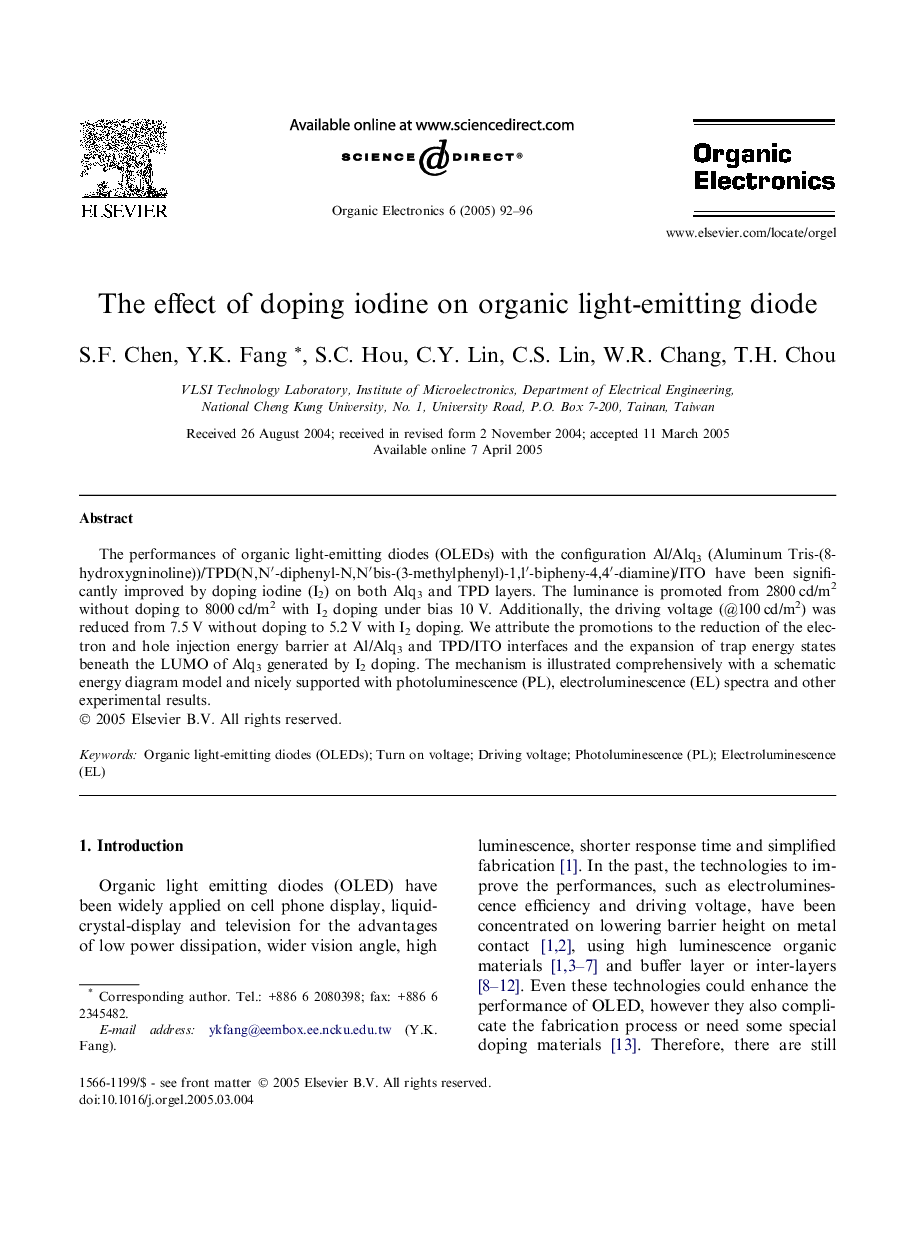| Article ID | Journal | Published Year | Pages | File Type |
|---|---|---|---|---|
| 10566199 | Organic Electronics | 2005 | 5 Pages |
Abstract
The performances of organic light-emitting diodes (OLEDs) with the configuration Al/Alq3 (Aluminum Tris-(8-hydroxygninoline))/TPD(N,Nâ²-diphenyl-N,Nâ²bis-(3-methylphenyl)-1,lâ²-bipheny-4,4â²-diamine)/ITO have been significantly improved by doping iodine (I2) on both Alq3 and TPD layers. The luminance is promoted from 2800Â cd/m2 without doping to 8000Â cd/m2 with I2 doping under bias 10Â V. Additionally, the driving voltage (@100Â cd/m2) was reduced from 7.5Â V without doping to 5.2Â V with I2 doping. We attribute the promotions to the reduction of the electron and hole injection energy barrier at Al/Alq3 and TPD/ITO interfaces and the expansion of trap energy states beneath the LUMO of Alq3 generated by I2 doping. The mechanism is illustrated comprehensively with a schematic energy diagram model and nicely supported with photoluminescence (PL), electroluminescence (EL) spectra and other experimental results.
Keywords
Related Topics
Physical Sciences and Engineering
Chemistry
Chemistry (General)
Authors
S.F. Chen, Y.K. Fang, S.C. Hou, C.Y. Lin, C.S. Lin, W.R. Chang, T.H. Chou,
